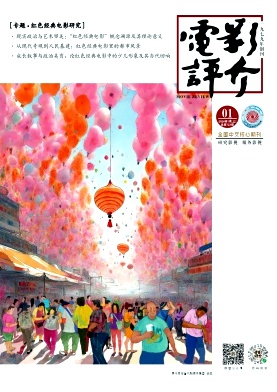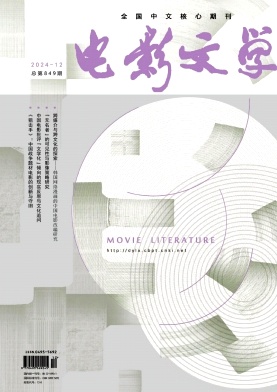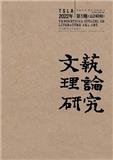
亚欧音乐研究(英文)(Asian-European Music Research Journal)(国际刊号)
- AMI入库
- 主管单位:
- 主办单位:
上海音乐学院“亚欧音乐研究中心”
- 国际刊号:
2701-2689;EISSN 2625-378X
- 国内刊号:
- 学科分类:
- 字数:
-
- 有无基金:
- 周期:
国际号刊-半年刊
- 特殊属性:
外文期刊
- 电话:
- 邮箱:
AEMRC@shcmusic.edu.cne_xiaomei@126.comgisajaehnichen@web.de(出版社官网信息)
- 复合因子:
0
- 综合因子:
0
- 收录:
- 级别:
AMI入库
- 杂志社官网:
- 投稿网址:
期刊简介
《亚欧音乐研究》期刊已被查看: 次
更新频次
单位占比
一作占比
投稿指南
1、该刊只有国际刊号!
2、投稿方式:邮箱投稿。
3、官网网址:
https://www.asian-european-music-research-ej.com
(网址目前打不开)
4、期刊主页:
https://www.logos-verlag.com/cgi-bin/engtransid?page=/aemr.html&lng=eng&id=
(期刊在柏林逻各斯出版社(Logos Verlag Berlin)的主页)
5、投稿邮箱:AEMRC@shcmusic.edu.cn(编辑部)
e_xiaomei@126.com(主编)
gisajaehnichen@web.de(合作主编)
(更多编辑邮箱请查期刊主页网址信息)
6、出刊日期:半年刊,每年出版2期。
7、官方微信公众号:上海音乐学院(shcm1927)
2022年3月28日星期一
上音全英文国际核心期刊《亚欧音乐研究》(AEMR)
【官方微信公众号信息】
上海音乐学院 2021-11-25
《亚欧音乐研究》(Asian-European Music Research Journal,简称AEMR)是由上海音乐学院“亚欧音乐研究中心”于2018年创办的全英文学术期刊。
该刊实行国际学术期刊通行的编委会和同行双盲评审制度,由亚欧音乐研究中心主任萧梅教授担任主编,德裔外聘教授Gisa Jaehnichen担任合作主编,编委会由遍布全球的15位学者组成,分别来自中国、法国、美国、英国、日本、乌兹别克斯坦、斯里兰卡、马来西亚、瑞典、菲律宾的不同科研院所和高等院校。
作为国际学术交流和发表平台,AEMR内容分为论文与评论(Articles & Reviews)两个板块,一年两期(夏季号与冬季号)。每一期都有相对集中的学术主题,涵盖了一系列基于音乐学与民族音乐学研究的音乐历史、后殖民与全球化、传统音乐在当代、音响档案实践、非物质文化遗产、音乐家与声音制作、流行音乐等议题;也包括来自社会和文化人类学、媒体与传播、数字技术、文化地理、艺术和博物馆的相关研究,以及最新的欧亚音乐文化热点议题与争论焦点。
该刊强调亚洲和欧洲文化以及亚洲和欧洲内部在时间和空间上的互联与互通,这些论题有益于讨论音乐实践和理论、音乐在社会中的作用以及音乐作为有意义的声音存在等等。立足于当代音乐实践,以开放的视角看待各种音乐及相关知识,充分展现亚欧音乐研究的各种可能性。
AEMR自创刊以来已发行8期,共发表文章(含评论)80余篇,其中绝大部分为原创首发。形式上既有理论研讨,也有个案式研究,既有描述性报告、也有分析性探讨。特别值得一提的是,该刊为以往较少出现在国际英文期刊中的亚洲学者提供了话语平台。中国、菲律宾、印度、老挝、越南、土耳其、斯里兰卡等国学者多样化的研究个案,带来了研究方法上的交流与碰撞,并突显出每个国家的学术传统及其自身的标准和意义,为在多元文化视野下学科如何实现复数的音乐与音乐学,提供了有效地探索。其中,中国大陆学者(共25人次)发表文章29篇,包括上海音乐学院师生26篇。
特别需要指出的是,该刊鼓励并为青年学子提供学术发表的机会,有近10篇论文来自在读硕博士研究生的研究,如凌嘉穗《归家:历史录音的“反哺”》、尹翔《第三届东南亚音乐教育交流大会上的独特体验(印度尼西亚,2019)》、刘祥焜《再思复合簧的分类》、熊曼谕《我如水漂泊的一生:苗族务工妇女的魔都之歌》、张寻的《“Leuangtengdong”:一首苗族歌曲的分析》、林芝的《广西壮族自治区那坡县与云南省富宁县的民歌唱法》等。这些研究反映了当代青年学子对多元音乐文化的观察和问题的思考。当这些“中国图景”与来自不同国家学者的研究同时出现在刊物上时,相信读者们都能感受到音乐世界的多样性,并触摸到来自不同音乐文化和不同学术圈的脉搏。
本刊的另一个中心板块“评论”(Reviews),围绕当下的音乐事件展开。如第一届华语音乐影像志节暨国际音乐影像志展映(上海·上音)、第三届SEAMEX(东南亚音乐教育交流)大会、“西方古典音乐中的文化帝国主义研究日”等学术活动;并注重书籍、唱片、影片的评论,以便更多人了解音乐学界的实时动向,也有助于关注亚欧音乐及其在社会中的作用,建立良好、积极的全球性视野。
发刊之初,AEMR即被“国际音乐资料大全”(RILM)收录,并陆续纳入“欧洲人文社科参考文献索引”(ERIH PLUS)、全球规模最大的同行评议文献摘要和引文数据库Scopus、以及著名的国际开放获取期刊目录DOAJ。其中,ERIH PLUS为欧洲科学基金会创办,是欧洲学界体量较大、颇具影响力的研究参考索引(由挪威教育科研部下的挪威研究指数中心管理)。Scopus则是全球公认的一流引文索引,其期刊评价指标SNIP(篇均来源期刊标准影响)和SJR(声望指数)广泛应用于欧洲、美洲的学术评价,AEMR是中国音乐界唯一被纳入Scopus的全英文期刊。刊物创刊以来不断获得国际学术评价体系认证,进一步提高了国际推广度,对促进上海音乐学院音乐学学科的全球影响力和国际学术交流与发展具有重要意义。
在学术性、前沿性的原则下,AEMR坚持所发论文在本领域中的高标准。刊物在创刊后出版了4期电子期刊,从第5期开始与柏林逻各斯出版社(Logos Verlag Berlin)合作,在电子期刊发行的同时正式出版纸质期刊。逻各斯出版社在积极参与刊物发行的合作中,体现了元数据传递和面向国际受众广泛推广的足够经验——这是刊物实现其学术理念的重要任务之一。
AEMR网站地址
https://www.asian-european-music-research-ej.com
Information for authors作者须知
【柏林逻各斯出版社(Logos Verlag Berlin)官网信息】
Call for Submissions
The journal provides a forum to explore the impacts of post-colonial and globalizing movements and processes on these musics, the musicians involved, sound-producing industries, and resulting developments in today’s music practices. It adopts an open-minded perspective on diverse musics and musical knowledge cultures.
Despite focusing on traditional and popular musics, relevant themes and issues can include explorations of recent ideas and perspectives from ethnomusicology, social and cultural anthropology, musicology, communication studies, media and cultural studies, geography, art and museum studies, and other fields with a scholarly focus on Asian and European interconnectivity. The journal also features special, guest-edited issues that bring together contributions under a unifying theme or specific geographical area.
In addition, the journal includes reviews of relevant books, special issues, magazines, CDs, websites, DVDs, online music releases, exhibitions, artwork, radio programs and music festivals.
The official email address of the Center is AEMRC@shcmusic.edu.cn.
Alternatively, submissions can be sent to any member of the editorial board or the co-editor.
Please send your full submissions (non-formatted, with all your figures and items placed within the text of a word-document and a cover sheet with your personal data) to this email address. Please make sure that you only include figures (drawings, photos, schemes, and others, and do not forget captions below the figures) for which you were granted rights. Also, please provide citations for the information you give the reader (don't assume the reader knows the basics of your topic!), and include the name, date, and place for any fieldwork interviews you cite (unless the interviewee requests anonymity, of course). You may use Harvard, APA, or Chicago Manual referencing and citation style, and please ensure all reference information is complete. Please add a short line giving your current affiliation (which can also be a university of which you are an alumna/us), what you urgently want to let readers know about you, and an email address for the authors in the first footnote of each article/review, in order to help obtain more knowledge about their individual development. This is to encourage online investigations on research topics and an exchange of opinions among scholars and other interested persons. We also want to prevent outdated author profiles being accessible over a longer period of time.
Asian-European Music Research Journal welcomes article submissions and does not charge any submission fee nor publication fee. All accepted articles will be available open access under the Creatice Commons licence CC BY-NC-ND. Authors retains the copyright and full publishing rights without restrictions.
All submissions in the given framework will be double-blind peer reviewed. The review process follows strict rules in order to exclude conflicts of interest and personal bias. This process is placed in a time schedule that fits the frequency of publications. The editors will get in touch with submitting authors on an individual basis.
The Review Process and Time Frames
Submissions have to be sent to the general email of the journal or to any of the editors. This is to ensure that everybody can submit, including those who have no permanent internet service and cannot access public platforms for an online submission. The same applies to reviewers and experts in their field who might be only reachable per email. Submissions should follow the requirements as observed in previous issues of the journal. Sources have to be traceable and reference lists should only comprise references that were really used.
After receiving a submission, the editors review first and suggest publications as blind submissions (without giving hints about the identity of the author) to the respective editorial board members being specialists in their fields. The editors decide about which submission can be accepted for which issue.
The informed editorial board members decide about a choice of two independent reviewers.
The review process starts after transmitting the submission to the reviewers and should not last longer than 6 weeks altogether.
After the editorial board members receive the reviews, the reviewers' decision in writing is transmitted to the editors who communicate the outcome and requests with the authors. This ensures that the editors do not know the reviewers and the reviewers do not know the authors.
The final layout is with the editors and depends on a reliable communication between the editors, the authors, the reviewing persons via the editorial board members, who have to agree to the amendments, and the copy editors, who suggest only necessary language corrections.
The editors send a final approval copy to the author and proceed only with print procedures and publisher contacts if all authors agreed to the layout and possible changes in the text.
The emails of these agreements also present an agreement of being printed. From submission to print, a time frame of 4-5 months is given. Submissions that can be accepted but come in late, will be considered for a later issue. The time frame is then extended to a minimum of 6 months.
上一篇:金融法苑(集刊)下一篇:河北开放大学学报(不收版面费审稿费)
常见问题
-
亚欧音乐研究杂志社官网、联系方式是什么?
亚欧音乐研究杂志社官网:https://www.logos-verlag.com/cgi-bin/engtransid?page=/aemr.html&lng=eng&id=
投稿邮箱:AEMRC@shcmusic.edu.cne_xiaomei@126.comgisajaehnichen@web.de(出版社官网信息) -
亚欧音乐研究杂志是核心期刊么?
亚欧音乐研究是核心期刊,级别是:AMI入库, 是:艺术分类下的
-
请问你们是亚欧音乐研究杂志社吗?
我们不是《亚欧音乐研究》杂志社。本站主要从事期刊信息展示与期刊推荐,不是任何杂志官网,直投稿件请联系杂志社。本站仅提供免费的学术指导、论文辅导、期刊投稿信息整理收集服务。
-
你们指导服务后可以保证文章被发表吗?
期刊发表的成功与否,主要取决于文章内容的质量。编辑老师会根据研究领域、创新性等多因素进行考量。我们会帮助您理解期刊的发表要求,助力提升发表几率,从而增加发表的机会。
-
晋级论文能否在报纸上发表?
在学术界,论文的发表往往被视为研究者职业发展的重要一环。晋级论文,即为了获得更高职称或学术地位而撰写的学术论文,通常需在专业期刊上发表。然而,许多人可能会问








